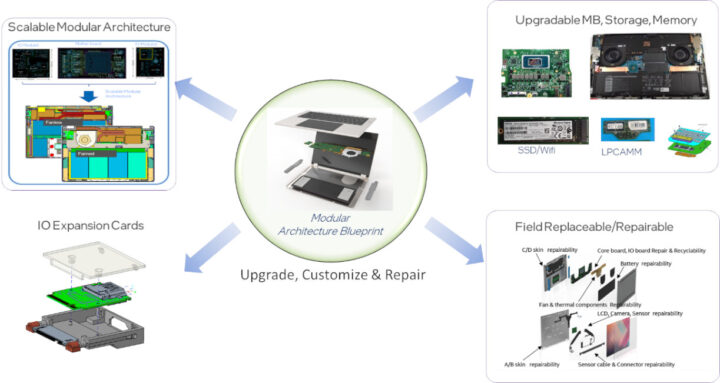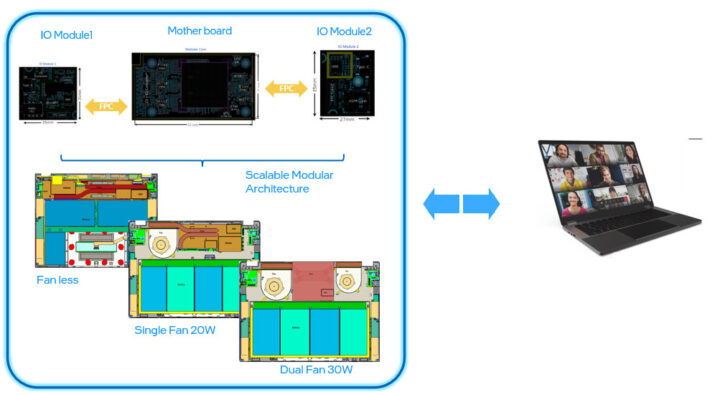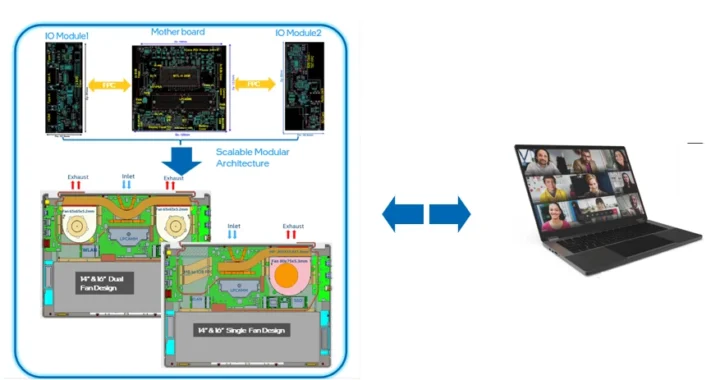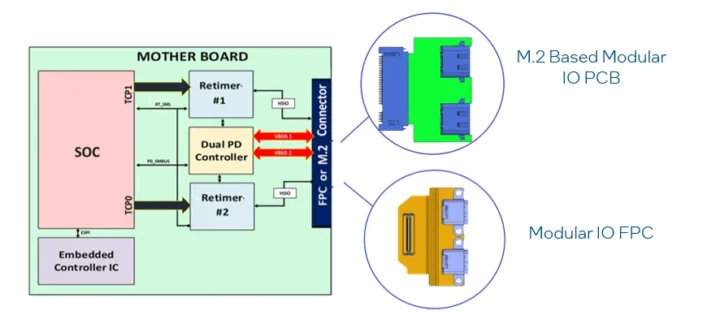Intel has published an article proposing a modular PC design that would improve the repairability/right-to-repair of laptops and mini PCs and reduce e-waste through the replacement of motherboard, display, and M.2 or FPC add-on modules for the user-facing ports.
Making repairable, modular electronic devices is not a new idea, and the Framework laptops are probably the best-known option now, but they do come at a premium. But most projects are limited success, for instance, Project Ara modular smartphone from Google eventually died off. We’ve also covered modular or open-source hardware solutions from smaller companies over the years such as Firefly Station P3D modular Arm mini PC with swappable cards, or Olimex Teres-I DIY and open-source hardware laptop.
It’s good news that a large company like Intel is taking the repairable, modular PC topic seriously, but as we’ll see below it’s currently a high-level proposal with few technical details.

Most laptops and mini PCs come with a single motherboard with the CPU and all ports, and the users can usually replace memory and storage if needed, and potentially the wireless module, but not much else. Intel’s modular PC design built on that but also adds M.2 or FPC IO expansion cards for the ports, meaning the motherboard would mostly have the processor. Socketed processors were not discussed. Displays would be “field-replaceable” meaning a professional would have to handle that part instead of the users.
Intel divided the modular PC concept into three architectures: Premium Modular PC, Entry/Mainstream Modular PC, and Desktop Modular PC.


I’m struggling to see how the premium and entry-level proposals differ, except the former is suitable for fanless design and the latter can handle 14-inch to 16-inch displays. Intel says its universal I/O boards (left and right I/O boards) can be utilized across various platforms or market segments for cost savings. The I/O boards for Premium Modular designs are engineered to be common between the fanless Thin & Light system (10W power envelope), and the premium fanned designs meant to function within a 20W (single fan) and 30W (dual fan, WiFi only SKU) power envelope. Intel did not say the display can be replaced on premium devices, so I’d assume it can’t due to their thinner design.
From what I understand the following can be replaced/repaired by the user or a technician:
- Premium – M.2 SSD, Core Board, and IO modules
- Entry-level/Mainstream – M.2 SSD, Core board, IO modules, 14-16-inch display, LPCAMM memory, and WiFi

It’s a bit easier to make a modular mini PC than a modular laptop, and here users would have a removable CPU module, PCH module, SO-DIMM memory, and GPU using slide rails, as well as USB-C/Thunderbolt IO modules using FPC cables or M.2 connectors soldered on the main board.

Time will tell how the proposal goes. I’m not confident so far, because Intel did not provide any detail or a prototype, and the chance of success would be greater if there was an initiative backed by a consortium involving Intel, AMD, and computer manufacturers. Repairable, modular computers will also cost more than their equivalent cost-optimized devices, so we’ll have to see if consumers would be ready to adopt this concept.
Thanks to TLS for the tip.

Jean-Luc started CNX Software in 2010 as a part-time endeavor, before quitting his job as a software engineering manager, and starting to write daily news, and reviews full time later in 2011.
Support CNX Software! Donate via cryptocurrencies, become a Patron on Patreon, or purchase goods on Amazon or Aliexpress. We also use affiliate links in articles to earn commissions if you make a purchase after clicking on those links.


